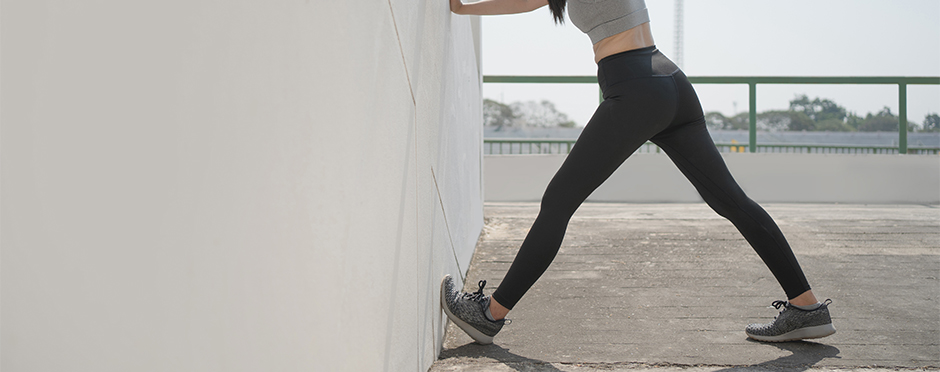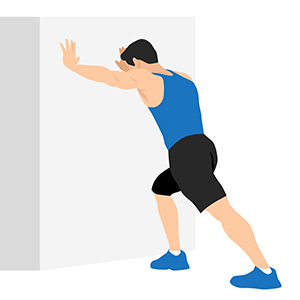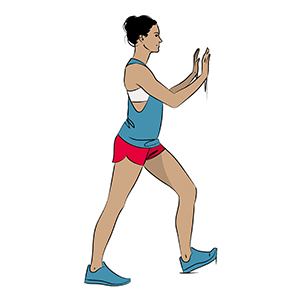
Do I Need to Stretch My Ankles?
Leave a CommentIf you have been inside a gym or physical therapy office, you may have heard the phrase “stretch your calves.” This phrase can mean so many different things to so many different people. Let’s take a few minutes to clear up the confusion, and ensure everyone gets the most out of their exercise routine.
What does it mean to stretch?
To stretch is to lengthen or extend one’s muscle to its full length. This is done to both increase length and elasticity of said muscle. There are two classifications of stretching, both “static” and “dynamic” stretches. The goal of static stretches is to increase muscle length, while dynamic stretches aim to increase blood flow and loosen up muscle fibers in preparation for exercises.
How do I stretch properly?
For a static stretch to be effective, it must be held statically (no bouncing) in the lengthened position for at least 30 seconds, and this can be repeated three times with a brief rest between each repetition. A stretch should feel strong yet comfortable. If a stretch becomes painful, it is no longer effective, and it is recommended you relax the region and repeat with less tension through the area.
Dynamic stretches include movement and are often seen as bouncing or swinging of limbs. For this discussion, let’s focus on static ankle stretching to maximize movement.
What muscles do I stretch?
The ankle can move in 4 different directions known as plantar flexion (pointing your toe down), dorsiflexion (pulling your foot up towards you), inversion (rolling your foot inward), and eversion (rolling your foot outward). A different group of muscles completes each movement. It is most common to have tightness in the plantar flexion muscles or gastrocnemius and soleus muscles. One way to test for tightness is to stand upright and attempt to raise your toes/forefoot off the floor without bending your knees. If you cannot do this, you likely have tight “calves,” as they say. Although it is less common, you can also have tightness on the sides of your ankle or the front, which would limit your ability to walk and/or drive without discomfort. It is recommended that you see a Physical Therapist for a more personalized approach to a stretching routine if this is the case.
What position do I need to be in to stretch?
Below you will see two images representing two common positions you can utilize to stretch the two major “calf” muscles. It should be noted that the two positions are required because each muscle has different attachment points. The gastrocnemius muscle stretch (LEFT) will require your knee to be straight as this muscle crosses the knee. However, the soleus stretch (RIGHT) will require your knee to be bent.


It is also important to note that there are many other additional ways and positions to stretch this muscle. Depending on your individual needs, it can be performed sitting, laying down, standing, or even side-lying. Check out your local Athletico for a more personalized program.
What time of day should I stretch?
Stretching in the morning can help relieve tightness from a long rest and inactivity while stretching in the evening can help you relax and relieve any tension from the day. To put it simply, stretching can be performed at any time of day and can be a simple way to help provide pain relief. The most important component is to perform stretching routinely to ensure consistent performance and allow your tissues to adapt to these changes for long-lasting relief.
What now?
Stretching plays a large role in the rehabilitation process as it can help with pain relief, muscle tension, balance, walking, and stability. Although it is most common to hear the phrase “stretch your calves,” nearly all the musculoskeletal muscles can be stretched in one way or another to elicit some relief. Feel free to stop by your local Athletico for a Free Assessment to learn more about how to manage your symptoms. Free assessments are available both in-clinic and virtually through our telehealth platform.
*Per federal guidelines, beneficiaries of plans such as Medicare, Medicaid, Tricare, VHA and other federally funded plans are not eligible for free assessments.
The Athletico blog is an educational resource written by Athletico employees. Athletico bloggers are licensed professionals who abide by the code of ethics outlined by their respective professional associations. The content published in blog posts represents the opinion of the individual author based on their expertise and experience. The content provided in this blog is for informational purposes only, does not constitute medical advice and should not be relied on for making personal health decisions.
